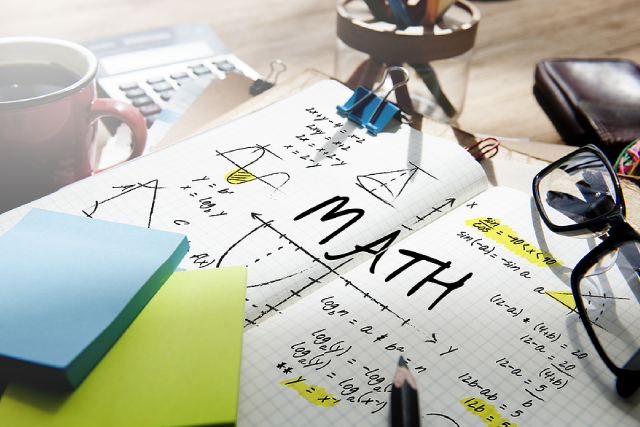In the journey of academic progression, students often encounter pivotal decisions that can shape their educational trajectory and future career prospects. One such juncture arrives in Secondary 3, where students are given the option to undertake Additional Mathematics, commonly referred to as A-Math. This subject, known for its rigour and complexity, introduces students to advanced mathematical concepts beyond the scope of elementary mathematics.
However, several crucial factors warrant consideration before embarking on this academic endeavour. This article explores the key aspects individuals should contemplate before deciding whether to pursue A-Math in upper secondary.
Understanding A-Math
A-Math focuses on three main pillars: algebra, geometry and trigonometry, and calculus. It is designed to prepare students for A-Level H2 Math.
For more information, refer to our previous article on A-Math vs. E-Math.
1. Aptitude and Interest
Firstly, students should evaluate their aptitude and interest in mathematics.
A-Math entails a significant leap in complexity compared to E-Math. It requires a solid foundation in fundamental mathematical principles and a propensity for abstract thinking.
Students who enjoy problem-solving and logical reasoning and are genuinely curious about mathematical concepts are likely to thrive in A-Math. Conversely, individuals who find mathematics daunting or lack enthusiasm for the subject may struggle to cope with the demands of A-Math.
2. Academic Goals and Career Aspirations
Students should align their decision regarding A-Math with their academic goals and career aspirations.
While A-Math is not mandatory, it can significantly enhance opportunities for pursuing certain fields of study and careers, particularly in STEM (Science, Technology, Engineering, and Mathematics) disciplines. For instance, engineering, computer science, economics, and various scientific fields often require a strong foundation in advanced mathematics. Therefore, students aspiring to pursue such paths may find A-Math beneficial in preparing them for the academic rigours ahead.
3. Time and Commitment
A-Math demands a considerable investment of time and commitment. The intensive coursework requires diligent study and practice to grasp complex mathematical concepts effectively. Students must assess whether they can allocate sufficient time to A-Math alongside other academic subjects and extracurricular activities.
Additionally, they should consider their ability to manage workload and deadlines effectively, as falling behind in A-Math can be challenging to catch up on due to its cumulative nature.
4. Academic Performance
Prior academic performance in mathematics serves as a crucial indicator of readiness for A-Math. Students should reflect on their performance in Secondary 2 mathematics and ascertain whether they demonstrated proficiency in the subject.
Success in foundational topics such as algebra, geometry, and trigonometry suggests a solid mathematical aptitude conducive to tackling the challenges presented in A-Math. Conversely, persistent difficulties or below-average performance may indicate the need for additional support or reinforcement before embarking on A-Math.
5. Support Systems
Having adequate support systems in place can greatly facilitate success in A-Math. Students should consider the availability of resources such as experienced tutors, peer study groups, and supplementary learning materials to aid their understanding of complex concepts and provide assistance when encountering difficulties.
Moreover, parental support and encouragement are crucial in fostering a positive attitude towards mathematics and sustaining motivation during challenging times.
6. Long-Term Benefits
While the immediate challenges of A-Math may seem daunting, students should weigh its long-term benefits. A strong foundation in advanced mathematics opens doors to a myriad of academic and career opportunities, equipping individuals with analytical thinking skills, problem-solving abilities, and a versatile skill set highly valued in today’s knowledge-driven economy. Therefore, students should view A-Math as an investment in their future prospects, recognising the potential dividends it can yield in terms of personal growth and professional advancement.
7. Personal Well-Being
Amidst the academic considerations, students must prioritise their personal well-being and mental health. The decision to pursue A-Math should not come at the expense of physical or emotional well-being. It is essential to maintain a healthy balance between academic pursuits, extracurricular activities, social engagements, and relaxation to prevent burnout and foster holistic development. Students should listen to their instincts and assess whether undertaking A-Math aligns with their overall well-being and happiness.
Conclusion
The decision to pursue A-Math in Secondary 3 is significant and warrants careful consideration. Students can make informed choices that align with their aspirations and capabilities by evaluating aptitude, academic goals, time commitment, support systems, and personal well-being. While A-Math presents formidable challenges, it also offers invaluable opportunities for intellectual growth, academic advancement, and future success. Ultimately, students should approach this decision with introspection, courage, and a willingness to embrace the journey of learning and discovery that A-Math entails.
Whether you choose to take A-Math or not, it is always best to seek extra guidance from experienced math tutors who can provide personalised assistance during classes. Consider Miracle Math, a leading tuition centre in Singapore offering secondary maths tuition, including Sec 3 A-Math tuition.
